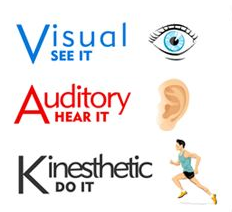When you were in grade school, you probably heard about the theory of multiple intelligences. Developed by psychologist Dr. Howard Gardner in the early 1980s, the theory states that different individuals learn best in different ways: For example, one student by be a verbal learner who prefers to listen and write, while another student may be a kinesthetic learner who requires interaction to gain valuable information. This theory makes sense; after all, people are often different from one another, demonstrating unique habits and interests. Over the years, educators have adapted their teaching styles to accommodate the various learning styles, costing thousands of hours of work and millions of dollars. It is unfortunate, then, that Dr. Gardner’s theory is patently false.
Why the Theory of Multiple Intelligences Is Wrong
Since Dr. Gardner put forth his theory three decades ago, researchers throughout the sciences, from neurology to sociology, have endured countless thousands of studies attempting to prove the concept correct. Unfortunately, most were unable to find any correlation between improved academic performance and tailored modes of instruction. Plenty of individuals harbor preferences for learning; when asked, more than 95 percent of people claim to learn better after taking in the information in a particular way. However, the science shows that learning through one’s preferred style is no indication that an individual will understand and retain the information any better. The fact is that learning is a complex process, and there are thousands of variables that affect how an individual gathers knowledge. Teachers must consider their students’ backgrounds, personalities, interests, motivations, and more in order to create a valuable and effective lesson plan. Asking that teachers also cater to individual students’ learning styles is making the system even more complex and needlessly wasting energy and resources.
How eLearning Has Already Adopted the Theory
The theory of multiple intelligences is a pervasive one, which means many instructional designers believe in learning styles automatically. As a result, many eLearning systems integrate the theory into the design of their courses, attempting to serve at least the most popular styles (audio, visual, kinetic) with alternate activities and projects designed to engage particular learners. ELearning hasn’t been the only educational industry to be duped by the myth of multiple intelligences. Instructional designers and teachers alike are drawn in by for-profit organizations peddling personality evaluations that reveal students’ learning styles. These companies usually also sell example lesson plans that accommodate various learners in various subjects. Such services are expensive and unnecessary, and they usually waste students’ time instead of helping them grow.
What Instructional Designers Can Do About It
Though advanced degrees are not always necessary to succeed in the eLearning field, plenty of instructional designers who return to school benefit from instruction in the industry’s current trends. Most academics understand the irrelevance of the multiple intelligences theory, and thus, most programs teach instructional designers how to create excellent online courses without worrying about learning styles. Still, it may be valuable to consider the importance of different instructional methods. Not every subject can and should be taught the same way. Either by the nature of the content or the ease with which it is conveyed, certain subjects simply must employ differing teaching styles. For example, studying literature requires verbal skills, and learning a skilled trade requires physical involvement. These styles often seem strikingly similar to the learning styles that are discernably false: interpersonal, kinesthetic, visual, mathematical etc. However, unlike learning styles, teaching styles are shown to have a positive effect. When designing courses, instructional designers should evaluate the material and select the most sensible teaching method to ensure their eLearning students gain the most benefit. In 1980, Dr. Gardner said “The potential utility of computers in the process of matching individuals to modes of instruction is substantial.” Though Gardner is likely incorrect regarding individuals’ learning styles, he was notably ahead of his time in predicting the power of eLearning. Today, more and more courses are moving online; not only do universities and community colleges increasingly provide all-online degree programs to busy workers looking to improve, but high schools and lower education levels are moving to the Web. Thus, it is becoming ever-more essential for instructional designers to thoroughly understand where, why, and how students learn. Better Planning And Utilization Of Inventory. Dynamic rules, policies, and predictions for inventory management lead to more accurate tracking and estimation of consumption and inventory levels at all points along the supply chain. This can be done with updates to your barcode printers and scanners and a better EPOS system for instance.










